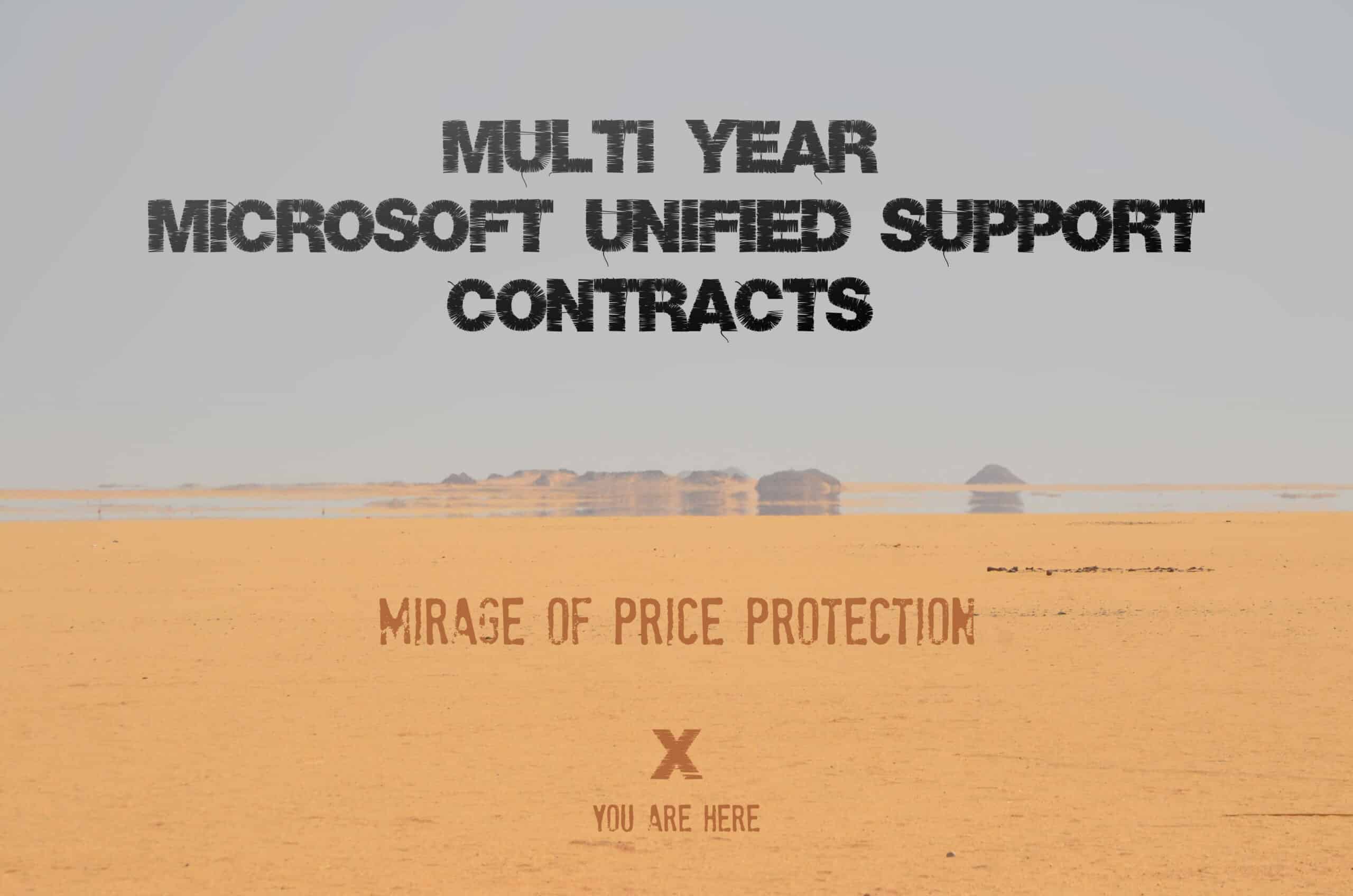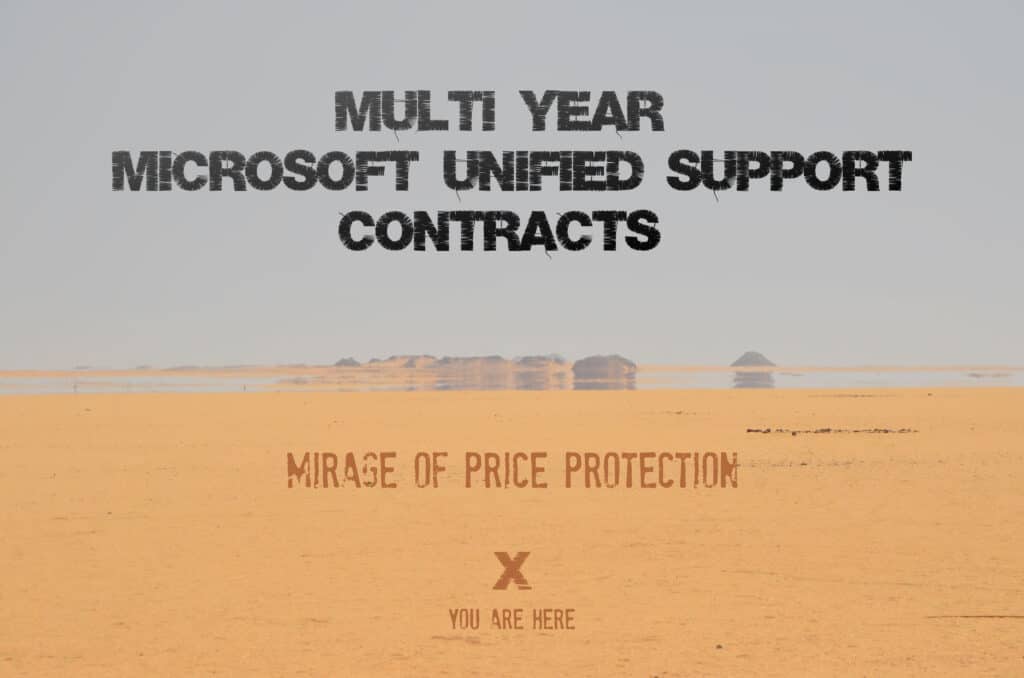

3 Year Microsoft Unified Support Agreements – No Real Price Protection.
- Multi-Year Microsoft Unified Support Agreement Alert for Enterprises
- Why Multi-Year Unified Enterprise Agreements Now
- Multi-year Microsoft Unified Agreements Are Logical Economical Hedge
- 3 Year MS Unified Contracts Force True Up Mid-Contract for Enterprises
- Only Microsoft Benefits from Multi-Year Unified Enterprise Deals
- Analysts Recommendation: Do Not Sign Multi-Year Unified Support Agreements
Multi-Year Microsoft Unified Support Agreement Alert for Enterprises
Analysts at Info-Tech Research Group are warning enterprise clients to read their Unified agreements carefully if they are considering a multi-year contract.
Many enterprises are finding a new clause that states that if their Cloud consumption grows 5% or more in a given year, they must true up at the end of that particular year.
Audience: Microsoft Vendor Management | IT Procurement & Sourcing | Enterprise CIOs

Why Multi-Year Unified Enterprise Agreements Now
With inflation projections for 2023 ending at 4.5% and economic recession warnings hitting CEO and CFO desks, locking in vendor rates has become a priority for Enterprise IT sourcing and procurement.
Cost containment and predictability are the marching orders for Enterprise procurement teams around Microsoft Enterprise Agreements (EA) and Unified Enterprise Support agreements.
Multi-year Microsoft Unified Agreements Are Logical Economical Hedge
It makes perfect sense for Microsoft Vendor Management teams at enterprises to seek out multi-year support agreements with Microsoft during volatile economic conditions.
Locking in rates with Microsoft hedges against inflation and better protects the enterprise if the economy enters into recession.
Microsoft is equally motivated to lock in Unified customers for 3 or more years as third-party alternatives to their offering mature and gain market share.
3 Year MS Unified Contracts Force True Up Mid-Contract for Enterprises
Analysts, professional negotiators, and vendor procurement teams have discovered a new clause in their multi-year Unified Enterprise Support proposals.
The new Unified contract clause states that if their Cloud consumption grows 5% or more in a given year, they must true up at the end of that particular year.
This multi-year Unified agreement language would make it possible for an enterprise to have 2 Unified cost increases during the term and not be able to exit the agreement until the 3rd Unified price increase was levied. The timing of the introduction of this selling tactic is particularly eyebrow-raising given the retirement of Premier Support on 6/30/22, removal of SAB credits, continued high interest rates, and threat of recession in 2023.
Only Microsoft Benefits from Multi-Year Unified Enterprise Deals
3-year Microsoft Unified Enterprise support agreements that don’t truly protect rates have little benefit to the enterprise buyer.
Why would Microsoft introduce this devil into the details of multi-year Unified contracts? Analysts offer 2 motives.
1) Mid-contract true ups increase the Unified revenue in the current Microsoft fiscal year.
2) As third-party alternatives to MS Unified mature and gain market share, Microsoft is able to slow the attrition rate by locking in customers for 3 or 5 years.
Analysts Recommendation: Do Not Sign Multi-Year Unified Support Agreements
Analysts recommend not signing 3 or 5 year Unified Support agreements to the vast majority of enterprises.
One clear exception is an organization with mostly on-premise Microsoft licensing spend and no plans to grow their MS cloud consumption by more than 4% in the next 3 years.
Otherwise, organizations would be better advised to commit to a single year Unified contract and keep your options open to explore third-party Microsoft enterprise support if Unified costs mushroom or support quality at Microsoft deteriorates.
